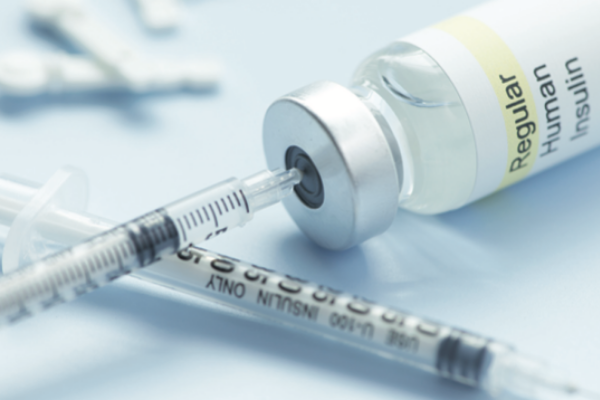OKLAHOMA CITY – Several attempts to limit insulin costs died in the Legislature last year, but two new measures were filed for consideration this year.
• House Bill 1019 by Rep. Rande Worthen, R-Lawton, decrees that any carrier providing coverage for insulin must cap the total amount a customer is required to pay for the medicine at no more than $100 per 30-day supply, “regardless of the amount or type of insulin needed to fill” the patient’s prescription.
Worthen indicated he intends to amend the price to a maximum of $100 for a 90-day supply.
• Senate Bill 979 by Sen. Carri Hicks, D-Oklahoma City, would require insurance carriers that provide coverage for insulin to charge no more than $25 per 30-day supply, “notwithstanding the type or number of prescriptions required by the insured for that time period.”
In addition, the carrier would be compelled to cap the total amount a patient could be charged for a 30-day supply of “related FDA-approved” diabetes equipment and supplies at no more than $100.
Both measures stipulate that nothing would prevent an insurance company from charging a patient less than the amount proposed in the legislation.
HB 1019 was assigned to the House Committee on Insurance. SB 979 was referred to the Senate Committee on Health and Human Services.
INSULIN EXPENSIVE
A friend “was telling me about the cost of insulin, especially if you don’t have insurance,” Worthen said. “The cost is just terrible.”
An Edmond resident who has Type 1 diabetes said that, under his insurance policy, he pays $35 per month for two 10-milliliter vials of insulin; without insurance, the cost would be $375 per bottle. Also, with insurance, he pays $75-$80 for a box of 10 of the glass vials.
His pump is about 10 years old and needs to be replaced. Insurance will pay only about 20% of the cost of a new pump, he said, so his out-of-pocket cost for a new pump would be $5,000 to $8,000.
Every three months he pays approximately $255 for new sensors and a transmitter. A sensor provides continuous monitoring of his body’s glucose level and the transmitter sends that data via Bluetooth to his cell ’phone.
The sensors are packaged in a box of three and last 10 days apiece; without insurance, a one-month supply of sensors costs $415, he said. A transmitter is good for three months; it costs $500 without insurance.
Filler tubes that are attached to the reservoir on his insulin pump cost $135 per month for a box of 10.
“The cost of insulin and associated supplies has gone up 200% to 400% in the last couple of years,” Worthen said. “Our complaint really isn’t with the insurance companies. It’s with the manufacturers who are charging these exorbitant prices.”
Worthen’s bill was assigned to the House Committee on Insurance, while Hicks’ bill was referred to the Senate Committee on Health and Human Services.
4 BILLS to LIMIT INSULIN COSTS DIED in SENATE
Four measures were introduced in the state Senate last year to cap insulin costs: SB 1158 by then-Sen. Jason Smalley, R-Stroud; SB 1082 by Senator Hicks; SB 1171 by Sen. George Young, D-Oklahoma City; and SB 1576 by Sen. Casey Murdock, R-Felt.
All four bills would have required insurance carriers to charge no more than $100 for a 30-day supply of insulin. SB 1576 also would have directed the state Insurance Department to investigate the pricing of insulin drugs to ensure that adequate consumer protections in the pricing of prescription insulin drugs are in place and whether additional protections are needed.
All four measures were referred to the Senate Committee on Retirement and Insurance, and none of them advanced to the Senate floor.
“I encourage anyone who wants to see limits on the cost of insulin and insulin products to contact your state Representative or state Senator about this issue,” Worthen said.
----------------------------------------------------
• According to the Oklahoma State Department of Health, approximately 356,000 Oklahomans, or 12% of the adult population, have been diagnosed with diabetes.
• An estimated 93,000 people in Oklahoma are thought to have diabetes but don’t know it.
• More than 1 million individuals in Oklahoma, almost 35% of the adult population, have prediabetes with blood glucose levels that are higher than normal but not yet high enough to be diagnosed as diabetes.
• Every year an estimated 26,000 Oklahomans are diagnosed with diabetes.
• Total direct medical expenses for diagnosed diabetes in Oklahoma were estimated at $2.8 billion in 2017, according to the OSDH.
• There are two types of diabetes: Type 1, in which a person’s body does not produce insulin, and Type 2, the most common, in which the person’s body does not use insulin properly.
• Most of the diabetics in Oklahoma, 90% to 95% of them, are Type 2, according to the Health Department’s public information office.


